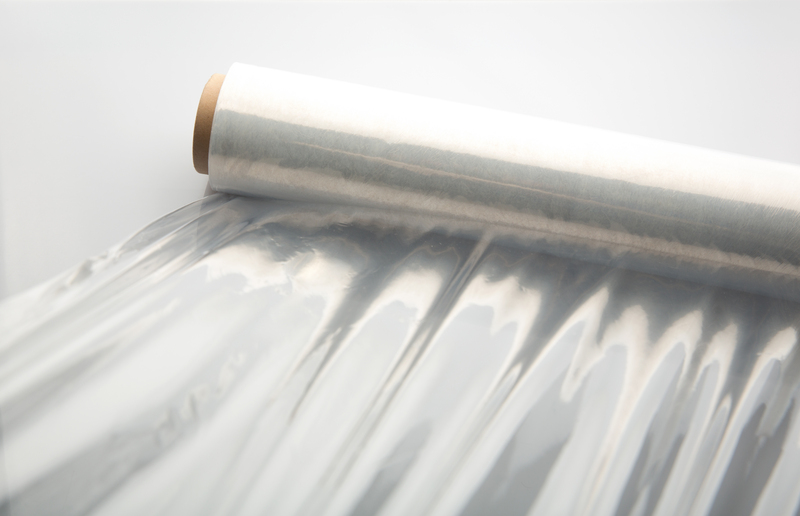Secrets to Successfully Remove Mould from Window Sills
Posted on 14/08/2025
Secrets to Successfully Remove Mould from Window Sills
Mould growth on window sills is a common problem in many homes. Not only does it create an unsightly appearance, but it can also cause health issues and damage to your property if left untreated. Understanding the secrets to successfully remove mould from window sills can help preserve the beauty and health of your home. In this comprehensive article, we'll reveal the best methods and preventative strategies to eliminate and control mould growth on window sills, ensuring your living space stays fresh and healthy.

What Causes Mould to Grow on Window Sills?
Mould thrives in moist, poorly ventilated environments. Window sills are prime targets because of condensation. When warm, humid air meets the cold surface of your window, moisture collects, providing the perfect setting for mould spores to multiply. Common contributors to mould include:
- Poor ventilation
- High indoor humidity
- Leaky or poorly sealed windows
- Inefficient heating and cooling systems
- Neglected cleaning routines
Understanding these factors is the first step to preventing and removing mould from your window sills.
Why is Mould on Window Sills a Problem?
Mould isn't just an aesthetic issue. The presence of mould on window sills can:
- Trigger allergies and asthma
- Aggravate respiratory illnesses
- Cause headaches and fatigue
- Damage wooden, painted, or vinyl surfaces permanently
- Create lingering odours
Because of these risks, it is vital to remove mould from window sills as soon as you notice it and take ongoing action to prevent its return.
Essential Tools and Supplies for Removing Mould
Before starting the removal process, gather the right tools and safety gear. Here's what you'll need:
- Rubber gloves and old clothes
- Protective eyewear and a face mask
- Non-metallic scrub brush or old toothbrush
- Absorbent cloths or paper towels
- Spray bottle
- Bucket of warm water
- Cleaning solutions (see next section)
Don't forget to ventilate the area well by opening windows and doors before, during, and after cleaning.
Best Cleaning Solutions for Mouldy Window Sills
There are a variety of cleaning products and natural remedies to remove window sill mould. Choose one based on the severity of the infestation and your material preference:
Commercial Mould Removers
- Easily available and effective for persistent or widespread mould growth
- Ensure the product is safe for your window sill material (wood, uPVC, etc.)
Homemade Cleaning Solutions
- White Vinegar: Undiluted white vinegar is a powerful antifungal agent. Spray it directly on mould, let it sit for one hour, then wipe clean.
- Baking Soda Paste: Mix baking soda and water into a thick paste for scrubbing. This non-toxic option is gentle on most surfaces.
- Hydrogen Peroxide: A 3% hydrogen peroxide solution kills mould spores. Spray on, leave for 10 minutes, then scrub and wipe away.
- Tea Tree Oil Solution: Add 1 teaspoon of tea tree oil to 1 cup of water. This natural solution is highly effective, but has a strong scent.
Important: Never mix bleach with ammonia or vinegar, as this can create harmful fumes.
Step-by-Step Process to Remove Mould from Window Sills
Get ready to banish mould and restore your window sills to pristine condition, following these expert steps:
1. Protect Yourself and the Surrounding Area
- Wear gloves, a face mask, and old clothing.
- Lay down newspaper or plastic to catch drips and prevent spreading spores.
2. Dry the Area
- If the window sill is wet, dry it with a towel first.
- Use a fan to speed up the process if needed.
3. Apply the Cleaning Solution
- Spray or gently apply your chosen cleaner onto the mouldy areas.
- Allow it to sit for at least 10-60 minutes, depending on the product's instructions.
4. Scrub Away the Mould
- Use a non-metallic brush or old toothbrush to gently scrub the area.
- Be thorough along seams and corners, where mould tends to hide.
5. Rinse and Wipe Clean
- Wipe away residue with a damp, clean cloth.
- Rinse with water to remove cleaning remnants, especially from wooden sills.
6. Dry the Surface Completely
- Use a dry cloth or paper towels to ensure the sill is as dry as possible.
- Leave the window open if weather allows, for further ventilation.
7. Dispose of Contaminated Materials Carefully
- Throw away used cloths, sponges, and protective gear in a sealed bag.
- Wash hands thoroughly after cleaning.
How to Remove Stubborn Mould Stains from Window Sills
Sometimes, even after scrubbing, grey or black stains may linger on the sill. For stubborn mould and mildew stains:
- Repeat the cleaning process, allowing a longer dwell time.
- Gently sand wooden window sills if stains have penetrated the paint (wear a mask to avoid inhaling spores).
- For uPVC or vinyl sills, try an oxygen bleach solution--test a small, inconspicuous spot first.
*If stains persist and the sill is badly damaged, you may need to repaint or replace the affected area for a fresh look.*
How to Prevent Mould from Returning to Window Sills
Prevention is the ultimate key to maintaining mould-free window sills for the long term. Implement these strategies:
- Ventilate rooms by opening windows or using extractor fans, especially in kitchens and bathrooms.
- Wipe down condensation from window panes and sills daily with a dry cloth.
- Use a dehumidifier to keep humidity levels below 60%.
- Fix leaks or damaged caulking around windows as soon as detected.
- Clean your window sills regularly, removing dust and grime that feeds mould spores.
- Consider applying a mould-resistant paint on wooden window sills for extra protection.
Natural Remedies vs. Chemical Cleaners for Mould Removal
Both natural mould remover solutions and chemical products have their pros and cons:
- Natural cleaners like vinegar and baking soda are safe, cost-effective, and less likely to damage sensitive surfaces.
- Chemical removers work quickly on tough infestations but may contain harsh ingredients.
- *For households with young children or pets, opt for non-toxic recipes whenever possible.*
*Tip: Always spot test any solution before widespread use, especially on painted or wooden sills.*
When to Call a Professional for Mould on Window Sills
Most small-scale mould growth on window sills can be handled with DIY solutions. However, professional help may be necessary if:
- The mould returns quickly after cleaning.
- You notice extensive growth (over 1 square metre) or a musty smell throughout the room.
- There is water damage or leaks beyond your window sill.
- You or household members experience worsening health symptoms.
Professional mould remediation specialists use advanced equipment and can identify hidden sources of mould, ensuring a thorough, long-lasting fix.

Take Action: Keep Window Sills Clean, Dry, and Mould-Free
The secrets to successfully remove mould from window sills lie in swift action, the right cleaning techniques, and diligent prevention. Here's a summary of the main takeaways:
- Identify the cause of moisture to stop mould at its source.
- Use effective cleaning solutions--either natural or chemical--to kill and remove mould completely.
- Routinely maintain and ventilate window sills to prevent recurrence.
- Don't ignore ongoing or extensive mould problems--consult a professional when in doubt.
With these tips, your window sills will stay healthy, fresh, and sparkling for years to come. Remember: regular care is your best defence against the return of unsightly and damaging mould.
Frequently Asked Questions: Removing Mould from Window Sills
How do I prevent black mould from coming back on my window sills?
- Control humidity with a dehumidifier.
- Improve ventilation by opening windows regularly.
- Fix leaks and wipe away condensation promptly.
- Clean sills often to remove dirt and mildew.
Is it safe to clean mould myself?
- Yes, for small areas. Always wear protective gear and ensure the room is ventilated.
- If mould covers a large area, seek professional help.
Can vinegar remove mould from painted or wooden window sills?
- Yes, white vinegar is safe for most surfaces. Spot test first and avoid soaking wood.
Should I repaint my window sill after mould removal?
- If paint is damaged or stained, sanding and repainting with a mould-resistant paint is recommended.
By following this comprehensive guide to removing mould from window sills, you'll ensure a clean, safe, and pleasant home environment. Take charge today--your health and your windowsill will thank you!




